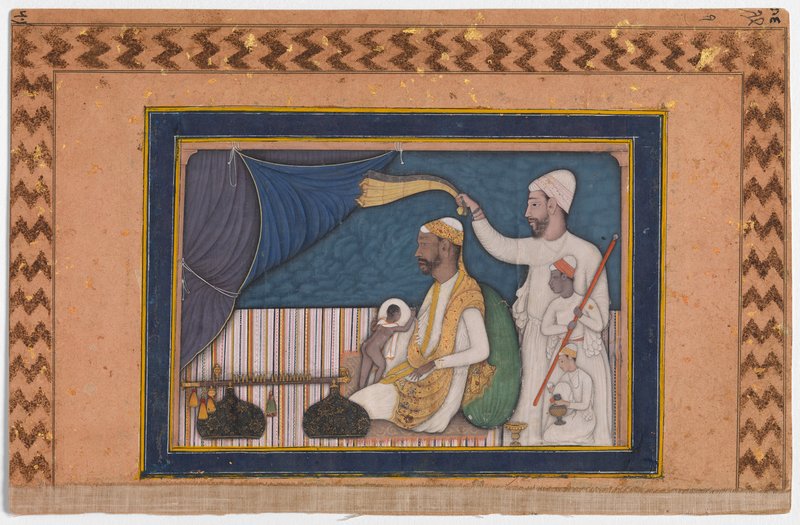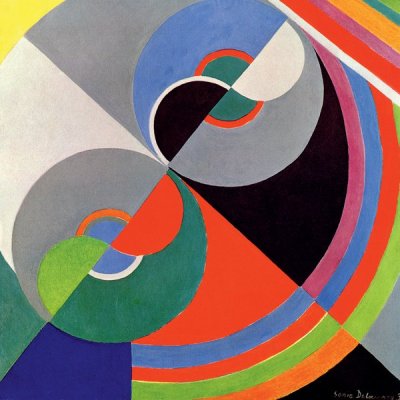Over the past few decades, the curious and the scholarly have put South India’s little-known Deccani art and its contextual architecture, literature and history firmly on the map. Now the time is ripe to give it the coming-of-age show it deserves. Navina Najat Haidar of the Metropolitan Museum of Art and Marika Sardar of the San Diego Museum of Art have nurtured, cajoled and flattered 52 institutions and individuals from Hyderabad to Seattle, from Prague to Toronto, to lend more than 200 stunning pieces for their show, ‘Sultans of Deccan India 1500–1700: Opulence and Fantasy’, opening at the Metropolitan Museum of Art on 20 April but previewing for Met Members this week.
A Parrot Perched on a Mango Tree, a Ram Tethered Below (c. 1630–70), Golconda. Jagdish and Kamla Mittal Museum of Indian Art, Hyderabad

Of the many kingdoms that flourished and then fell into obscurity during India’s thousands of years of cultural history, the five sultanates of the Deccan region are some of the most mysterious. Even their names are laced with fantasy. Try saying them out loud: Ahmadnagar, Berar, Bijapur, Bidar and Golconda. Despite thriving not so long ago – in the 16th and 17th centuries – their monuments often stand forlorn today and their moveable art, what little there seems to be of it, has been scattered around the world. Yet it is of the highest quality and originality. The exquisite paintings, metalwork, manuscripts and textiles are considered to be some of the finest examples of India’s stunning art heritage, and some of the highest quality creations of the wider Islamic world.
The Deccan sultans – often multilingual, musicians, poets, as well as adept at diplomacy and on the battlefield – encouraged a truly international court and culture. To their own cultural pot of Hinduism with its Bhakti movement, Islam with its Sufism, folk and animistic beliefs, were added the influences of international traders who came from North India, Persia, the Ottoman Empire, Africa and Europe. From the courts to the marketplaces, each sultanate city has its own distinctive cosmopolitan culture.
Sultan ‘Ali ‘Adil Shah II Slays a Tiger (c. 1660), Attributed to the Bombay Painter (probably Abdul Hamid Naqqash), Bijapur. The Ashmolean Museum, Oxford. Lent by Howard Hodgkin

The exhibition makes this its central message. It is arranged court by court, each section starting and ending with connections to the greater world. Thus, for Golconda, the 56.7 carat Shah Jahan Diamond, which Mughal emperor Shah Jahan wears in one of his best-known portraits, reminds us that until the 18th century Golconda’s mines supplied the world with its finest diamonds. At the close of this section, painted cotton hangings known as a kalamkaris and made on Golconda’s Coromandel Coast (India’s eastern seaboard), set an array of figures from Persian, Indian, Dutch and English worlds among a delightful mishmash of architectural forms and pattern-book floral borders. Many would be exported to decorate Western European homes.
Portrait of a Ruler or Musician (c. 1630), Bijapur or Golconda. Collection of Terence McInerney, New York

Between these bookends are distinctive pieces, including one of the most important paintings to have emerged from obscurity in recent years; an enigmatic portrait of a dark-skinned nobleman. Is he Indian or of east African descent? – Ethiopia was a source for slaves who in the liberal sultans’ cities could, and did, rise to the top. This is a snapshot of real person: his lips are stained with paan, the digestive that includes betel nut whose juice runs red when chewed; a nude child grips his knee; a servant fans them nonchalantly. Could he be a nobleman of the Golconda or Bijapur royal family, an African nobleman, or an eminent musician at a court where music was an essential part of being sophisticated and educated?
And so the curious and the scholarly go to work in this exciting field where there is so much still to learn. This entrancing exhibition may make the visitor curious, too.
‘Sultans of Deccan India, 1500–1700: Opulence and Fantasy’ is at the Metropolitan Museum of Art, New York, from 20 April–26 July.



